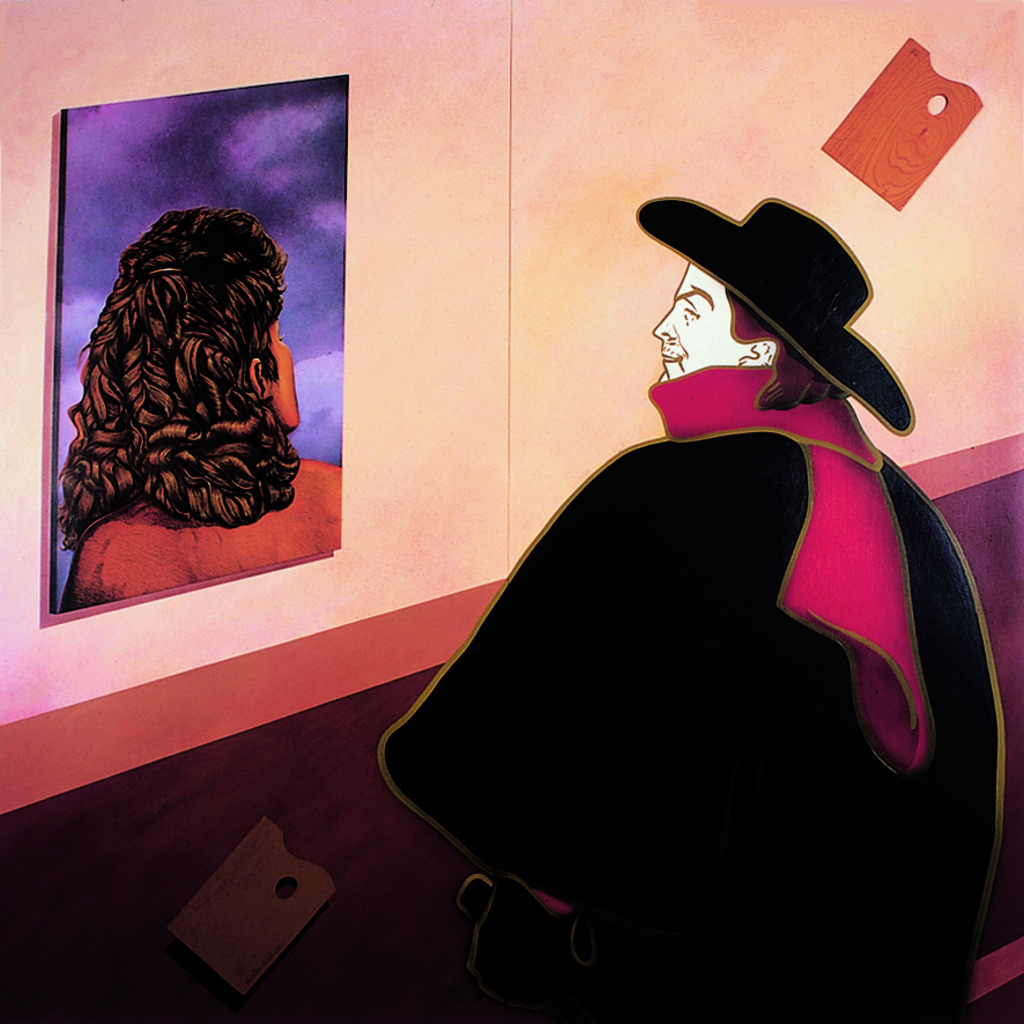Aristide esguardant Gala (Aristide watching over Gala)
The “Paint Painting” series can be seen as a meta-pictorial exercise that turns the discipline of action into the focus of attention. This approach creates meaning through the incorporation of diverse, de-contextualised fragments of the history of the genre to new compositions. History is redefined as a deposit of codes that can embrace new, diverse formulations especially through a recombination process that is basically ironic in nature.
The paradigm follows Miró’s “combinatorial syntax”, which Romá de la Calle calls “the innate inclination towards a suggestive narrative style rooted, most of the times, in an intentionally sought shock.”
The artist first analyses canonic works and then chooses the elements to be transmuted to come up with an evocative synthesis of new, unexpected situations. His conceptual approach is based on surrealistic collage. The technique generally obeys pictorial rules but on occasions transcends them to create an object.
In this work, Antoni Miró represents a series of flat elements in an exhibition hall. He places a drawing, a painting and two artist’s palettes in front of a dihedral formed by the wall and the floor, with the skirting board establishing the perspective.
None of these four elements is represented in accordance with the vanishing points in the background setting scene nor do they need to be. The contradiction of perspectives paradoxically allows the scene to be understood in a more sophisticated way because it produces a higher plane than the purely perceptual one. This painting is one of those illustrating Prof. de la Calle’s comment on the pictorial space, which becomes “a singular ambit where a planned meeting of several references takes place, which does not conceal the corresponding conceptual background”.
The drawing of Aristide Bruant, taken from the Toulouse-Lautrec posters, metaphorically alludes to his status as a privileged spectator, as he was of Montmartre’s bohemian activities in the late nineteenth and early twentieth centuries. He is the active protagonist of the image, and directs his gaze to a painting that is a transformation of Dalí’s Gala from behind Looking in an Invisible Mirror.
First of all, one should note that this is only a fragment of Gala’s head, and also that in Miró’s work we find a cloudy sky as a background, which does not appear in the original. Another difference is that Gala looks right in Miró’s work and left in Dalí’s, and the vertical line on the wall, which provided the original with balance, is moved outside the frame.
The conflict between the real and the apparent, evoking Magritte’s surrealism, is present in this work by making one of the palettes ‘painted’ and the other ‘real’, overlapping the painting. The body of the latter palette has ‘visual thickness’, and casts shadows that dazzle those of Gala’s portrait and the other palette. Only the texture reveals the truth. It is as if the work had been conceptually painted with two clean palettes, one figurative and the other ‘real’, as if the artist was trying to deliberately assemble cut-outs to glue them on an imaginary background.
Santiago Pastor Vila
